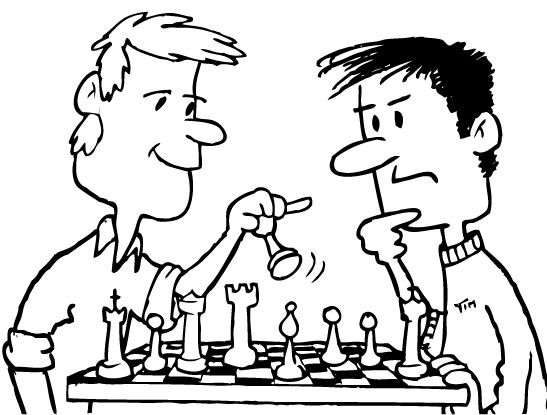The Flank Attack: How to use and defeat them
Posted on December 16,2014 By GM Levan Aroshidze in Strategy & Game Review, General Chess Articles, Beginner's Corner. As we know, a chessboard is separated into three parts: the Queen's flank, the center and the King's flank. Normally, the center is always under particular attention from the both sides, due to its high strategic importance. This makes it quite tough to take total control over the center and create a winning attack, while it's relatively easier to build the initiative on the flanks. A flank attack may have various goals, for example, opening the[...]
Greatest Games of Chess Ever Played - Part 2
Posted on December 15,2014 By OnlineChessLessons.NET Contributor in Strategy & Game Review, All Articles w/ Videos, Classic Games (Pre 2010). Learn how to systematically crush your opponent! In the video "Greatest Games of Chess Ever Played – Part 2" by GM Roman Dzindzichashvili, we are treated to an analysis of a game played between Vasily Smyslov and Samuel Reshevsky. Smyslov was a Grandmaster, world champion, and one of the greatest chess players of all time. His chess legacy includes many opportunities that we can all learn from, including novelties in chess theory, strategy, and e[...]
FREE DVD + MASSIVE 50% OFF SALE ON ALL EMPIRE CHESS DVDs - EXTENDED!
Posted on December 10,2014 By GM Damian Lemos in Non-Chess related, All Articles w/ Videos, General Chess Articles. This week we’re giving away another premium DVD as well as doing 50% off all Empire Chess DVDs. I want to help you get better at chess and you can't do everything on your own. You have to organize your training method and diversify your training materials - this is exactly what we have done with the Empire Chess DVD series. The holiday season is in full swing and this week we’re giving away the Empire Chess DVD “How Grandmasters refute gambits” b[...]
The Pawn Majority as a Strategic Element
Posted on December 09,2014 By GM Levan Aroshidze in General Chess Articles, Beginner's Corner. Some pawn exchanges in the center normally lead to asymmetrical pawn structures - when opponents get pawn majorities (4 pawn against 3 of opponent, 3 against 2 and etc.) on different sides of the board. Pawn majority is a very important strategic element that may have a decisive impact on the result of the game. It is a kind of lighthouse, which is showing the direction where you could develop your play. In another words – a pawn majority can be[...]
OnlineChessLessons.net is a producer of thousands of free chess articles and free chess videos by FIDE chess masters. They recently released the renowned Empire Chess series that has been taking the chess world by storm. Please consider checking out their chess blog and chess shop with tons of free updated previews.



























